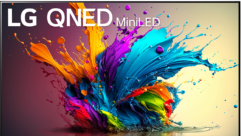Manufacturers Concentrate on Developing LCD Technology
Apr 7, 2008 12:00 PM
The latest TV sales figures released by NPD Group—for the week preceding Super Bowl 2008—show LCD outselling plasma TV by well more than three to one with LCD taking 79 percent unit market share while projection TVs limped along at 11 percent and rear-projection at 4 percent. Now that LCDs clearly dominate the market, manufacturers are turning their focus to the next level in hopes of eliminating problems that have dogged LCD flatpanels from the beginning.
Despite its popularity, LCD has a long way to go to overcome some of the nagging performance issues inherent in the technology. Last year, 120 Hz refresh rates were the buzz, claiming to improve motion in fast-moving scenes. The shift to 1080p resolution at the high end promised to improve the viewing experience in larger screen sizes despite a lack of 1080p source material.
This year companies are looking ahead. At a press briefing for journalists last week at Dolby’s New York offices, Dolby and partner Sim2 demonstrated a working prototype of the companies’ HDR technology, which uses local dimming technology to boost brightness and contrast levels in LCD TV.
According to Dolby, its HDR technology addresses LCD display limitations with proprietary designs that employ locally modulated LED backlighting rather than the cold cathode fluorescent bulbs currently used in LCD TV. Dolby maintains HDR achieves the full dynamic range of what the eyes can see by locally controlling the brightness to provide the precise level that each portion of the image requires.
The results were impressive. The demo produced images so bright we were tempted to shield our eyes—whether it was an orange lily against a dark background or the bright lights of a Times Square-like setting at night. Despite the extreme brightness, black backgrounds remained truly black and exhibited none of the milky appearance that LCD TVs suffer from today.
The LED backlight behind the technology packed 1,838 LEDs, according to Bharath Rajagopalan, business-line director of image technologies at Dolby, who said the technology is scalable and self-correcting. When the LED bulbs begin to dim, they can recover brightness via dynamic calibration, according to Rajagopalan, who said individual manufacturers would determine how to use that capability but that it shouldn’t require customer intervention. Manufacturers will be able to choose the level of LED performance “commensurate with budget.”
According to the companies, Sim2 provided the backlight unit and thermal management for the prototype, with Dolby contributing the processing. The companies didn’t disclose pricing or availability for the TV—or any product incorporating the technology—but assured journalists high startup costs would ensure that initial products coming out of the joint venture would carry a high-end price tag for the enthusiast market.










